Origins and Production of Freshwater Pearls
Freshwater pearls are cultivated within mussels that live in freshwater bodies, such as lakes, rivers, and freshwater ponds. The species of mussels that produce these pearls primarily belong to the Hyriopsis genus, with Hyriopsis cumingii and Hyriopsis schlegelii being the most common freshwater pearl-producing varieties.
The majority of freshwater cultured pearls are produced in China, followed by Japan, the United States, and other countries with suitable freshwater environments.
Chinese pearl farms, in particular, have been recognized for their ability to produce large quantities of high-quality freshwater pearls.
Differences Between Freshwater and Saltwater Pearls
Freshwater pearls differ from traditional saltwater pearls in several ways. One significant difference lies in the type of mollusk used in their cultivation: freshwater pearls are produced by mussels, while saltwater pearls come from oysters.
Moreover, a single mussel can produce multiple pearls simultaneously, whereas an oyster typically produces only one pearl at a time.
Another notable difference is the composition of the pearls themselves. Freshwater pearls are composed almost entirely of nacre (if they do not have a bead) – the iridescent material that forms the pearl's lustrous surface.
In contrast, saltwater pearls often have a bead nucleus made of oyster shell, which is then coated with layer upon layer of nacre.
This difference in composition results in freshwater pearls generally having a thicker nacre layer, contributing to their unique appearance and durability.
Evolution of Freshwater Pearl Farming
In the early days of freshwater pearl farming, the pearls produced were small and rice-shaped, earning them the nickname "rice pearls."
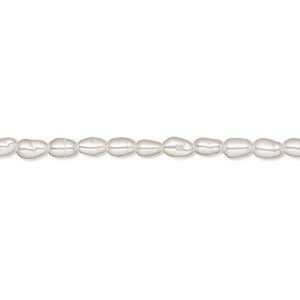
Technological advancements and improved cultivation techniques have since enabled farmers to produce larger, rounder pearls that rival the quality of saltwater Akoya pearls.
These advancements have made freshwater pearls more desirable and accessible to a broader audience, increasing their popularity in the jewelry market.
Pearl Quality
When assessing the quality of freshwater pearls, several factors come into play:
Luster:
The luster of a pearl refers to its shine and reflective quality that comes off the surface and from deep below the surface. High-quality freshwater pearls exhibit a bright luster, with high reflections.
Size:
The size range for freshwater pearls is 3mm-15mm. The larger the millimeter size, the more expensive the pearl, as long as the other factors are high quality.
Nacre Quality:
Nacre is the liquid substance that is secreted from the mantle tissue that coats the rough interior surface of the shell where the oyster or mussel lives.
The nacre hardens to form a beautiful iridescent surface called Mother-of-Pearl. It is also the substance that coats the bead or piece of mantel tissue to form pearls.
Surface Quality:
This factor is determined by the presence of blemishes or irregularities on the pearl's nacre surface. The fewer imperfections, the higher the quality of the pearl.
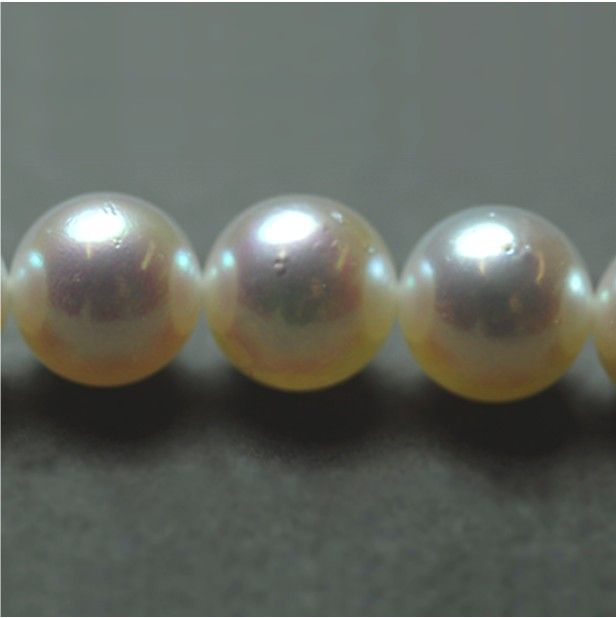
Shape:
While round pearls are typically the most sought-after, freshwater pearls come in various shapes, such as oval, button, potato-shaped and baroque. Unique shapes can add character and interest to a piece of jewelry. In recent years round shapes have been perfected which adds to their desirability and value

Body Color and Overtones:
Freshwater pearls are available in a wide range of colors, from classic white and cream to more exotic hues like lavender and pink and highly appealing natural colors.
The color preference is subjective, but even vibrant colors are generally considered more valuable.
But beware of artificial colors created by irradiation, they generally appear artificial with a metallic surface and colors that just don't look natural, they also tend to be much less expensive.
The body color is the first color seen; overtones are the sheer color(s) that lie over the body color. Example: White with rosé (pink) overtones or dark gray with purple or green overtones, etc.
Matching:
In jewelry pieces that feature multiple pearls, matching pearls for all the factors mentioned is important, especially when assembling strands.
Pearl experts say that because cultured pearls are an organic material no two will be exactly alike; the goal is to create visual harmony when observing the whole piece. i.e. you won't have pearls standing out visually because their color, size, or luster is very different from the rest.
Affordability of Freshwater Pearls
Freshwater pearls are significantly less expensive than saltwater pearls due to several reasons.
- First, the cultivation process for freshwater pearls is more efficient, as mussels can produce multiple pearls at once.
- Second, the sheer volume of freshwater pearls produced, especially in China, has increased supply and consequently lowered prices. But large high-quality round pearl strands will be the most expensive.
- Finally, freshwater pearls often have suffered from a lower perceived value due to their initial association with small, irregularly shaped "rice pearls."
Freshwater Pearl Enhancements
- May be bleached, dyed, and or tumbled (to smooth out pearls' surfaces)
- Freshwater cultured pearls may show overt signs of dyeing or irradiation
- You must assume that most cultured pearls will be subjected to some type of enhancement as they are industry-accepted practices
- Enhancements are performed on freshwater pearl farms
Cultured Freshwater Pearls - Our Favorites

Classic Freshwater Pearl Fish Hook Earrings
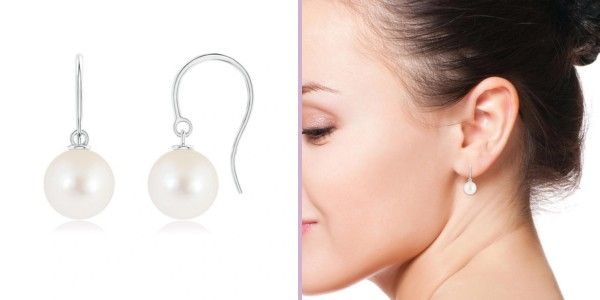
Seed Freshwater Pearl and Diamond Ring
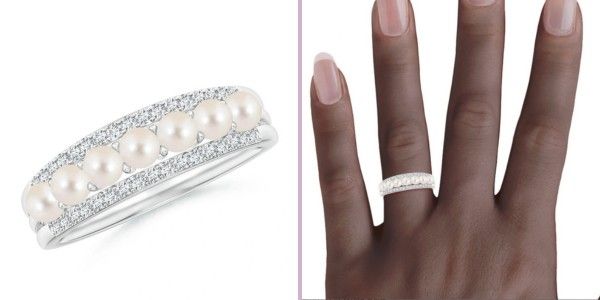
7-8mm, 16" Single Strand Freshwater Pearl Necklace
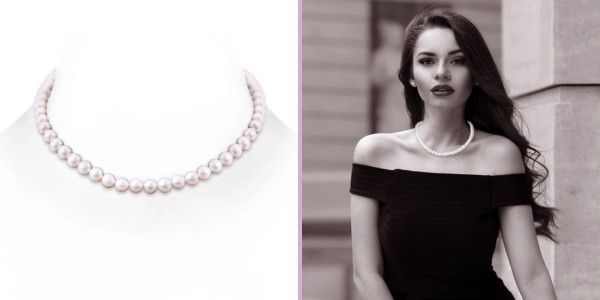
Freshwater Pearl and Amethyst Bracelet
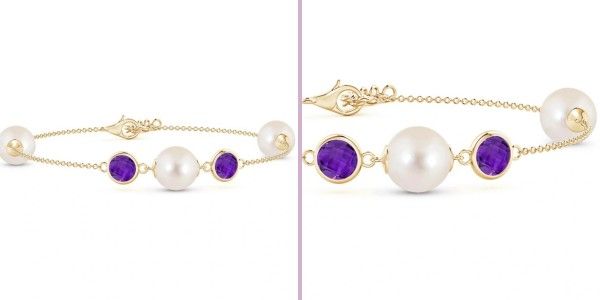
30" Freshwater Pearl Opera Necklace
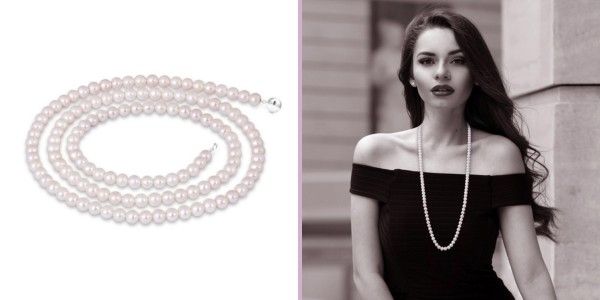
Bezel-Set Round Freshwater Pearl Solitaire Pendant
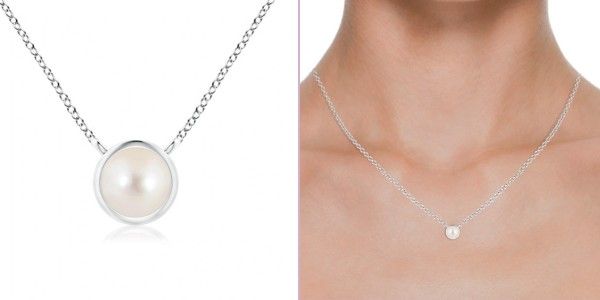
7-8mm, 18" Multicolor Freshwater Pearl Necklace
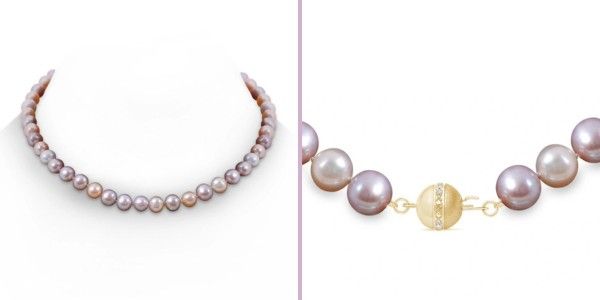
Freshwater Pearls in Fashion
Today, freshwater pearls are very much in fashion, thanks to their affordability, variety, and unique characteristics.
Today's jewelry designers love working with freshwater pearls because of their versatility and availability. Therefore they can be found in a range of jewelry pieces, from classic pearl strands and stud earrings to more contemporary designs that incorporate mixed metals, gemstones, and innovative shapes.
Freshwater pearls can be styled in various ways, from casual and bohemian looks to more formal and sophisticated ensembles.
Caring for Cultured Pearls
- Do not wear pearl strands with any other jewelry that will scratch the delicate nacre coating
- Do not expose to hairspray, fragrance, or body lotion
- Remove pearl jewelry prior to playing sports or doing housework
- Pearls should be the last thing you put on and the first thing you take off
- Professionally cleaning and restringing is recommended once a year if you wear your strands often
- When caring for pearls at home, wipe them with a soft, slightly damp cloth
- There are mild liquid jewelry cleaners that are safe for cultured pearls. See our article The Best Jewelry Cleaning Kits.
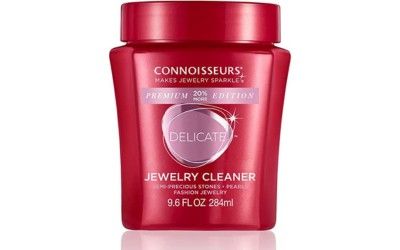
Storage:
- Store your freshwater pearls separately from other jewelry to prevent scratches.
- Keep them in a soft pouch or lined jewelry box, away from direct sunlight or extreme temperatures.
- Do not store pearl jewelry in a plastic bag. Pearls need air to retain their moisture.
- Do not store in safety deposit boxes for long periods of time (years) the nacre coating will dry out and crack.
- Always store in the original packaging or soft-lined pouch
Maintenance:
Periodically check the stringing of your pearl necklaces or bracelets to ensure they are secure. Restring your pearls every few years, depending on wear, to maintain their integrity.
By pairing freshwater pearls with complementary jewelry pieces and outfits, you can create stunning looks that showcase their unique beauty. With proper care and attention, your freshwater pearl jewelry will remain a cherished addition to your collection for many years to come.
Top Frequently Asked Questions About Freshwater Pearls
As a jewelry consultant, I have compiled a comprehensive guide to answer the top 15 frequently asked questions about freshwater pearls. This guide aims to help you make informed and confident decisions when choosing the perfect freshwater pearl jewelry for yourself or as a gift.
What are freshwater pearls, and where do they come from?
Freshwater pearls are a type of pearl that is formed in freshwater mussels, typically found in lakes, rivers, and ponds. They primarily come from China, but other countries like the United States and Japa
How are freshwater pearls formed?
Freshwater pearls are formed when an irritant, such as a tiny piece of sand or a parasite, enters the mussel. The mussel then grows a pearl sac around the irritant and secretes a substance called nacre, layer by layer around the irritant, forming the pearl. A natural pearl is formed in the same way, by spontaneously covering an irritant within its body, without any intervention from man and not on a pearl farm.
What is the quality of freshwater pearls?
The quality of freshwater pearls can vary greatly depending on factors such as the mussel species, water quality, and farming techniques. High-quality freshwater pearls are known for their luster, round shape, and smooth surface.
What colors do freshwater pearls come in?
Freshwater pearls are available in a wide range of colors, including white, cream, pink, lavender, peach, and even black. The color of a pearl is determined by the type of mussel and the environmental conditions in which it was formed.
What shapes and sizes are available for freshwater pearls?
Freshwater pearls come in various shapes such as round, near-round, oval, button, baroque, and drop. Sizes can range from as small as 2mm to as large as 15mm or more.
How are freshwater pearls graded and priced?
Freshwater pearls are graded based on factors such as luster, surface quality, shape, and size. The grading system typically includes AAA (highest quality), AA, A, and B (lowest quality). Prices can vary significantly depending on the grade, with AAA pearls commanding a higher price.
How can I identify fake pearls?
To identify fake pearls, do not perform the "tooth test." Fake pearls will either be much heavier, usually made of glass, or much lighter, from a plastic type of lightweight bead. Also, the coatings will be super smooth and very round and uniform, with no subtle differences, so check for uniformity in shape, size, and luster.
Are freshwater pearls ethical and environmentally friendly?
Freshwater pearl farming is generally considered an ethical and environmentally friendly practice. Pearl farmers often work to maintain a clean and healthy environment for the mussels, which benefits the surrounding ecosystem.
What types of jewelry are made with freshwater pearls?
Freshwater pearls are used in various types of jewelry, including necklaces, bracelets, earrings, pendants, and rings.
Can I wear freshwater pearl jewelry every day?
Yes, freshwater pearl jewelry can be worn daily. However, proper care and maintenance are essential to ensure the pearls maintain their beauty and luster.
How can I style freshwater pearls?
Freshwater pearls are versatile and can be styled in numerous ways. Pair them with casual outfits for a touch of elegance or use them to elevate formal attire. Mixing pearl sizes, shapes, and colors can also create a unique and modern look.
What is the difference between freshwater and saltwater pearls?
Freshwater pearls are formed in freshwater mussels, while saltwater pearls come from saltwater mollusks like oysters and abalones. Saltwater pearls are generally more expensive and have a higher luster than freshwater pearls.
Can freshwater pearls be dyed or treated to enhance their color?
Yes, freshwater pearls can be dyed or treated to enhance or change their color. However, treatments may not be permanent and can affect the pearl's value.
Are freshwater pearls a good gift option?
Freshwater pearls make an excellent gift choice due to their beauty, versatility, and affordability. They are suitable for all occasions, such as birthdays, anniversaries, graduations, and weddings.
What are the other types of pearls?
In addition to freshwater and Japanese Akoya cultured pearls, there are also Tahitian pearls and South Sea Cultured pearls. These last two varieties are far rarer, much larger in size, have high price tags, and are highly sought after.
In Conclusion
We hope you have enjoyed our article on freshwater cultured pearls and have treated yourself to one or more beautiful designs from Angara.
By understanding the origins, quality, colors, shapes, sizes, grading, pricing, and care of freshwater pearls, you can confidently choose the perfect freshwater pearl jewelry piece for yourself or as a thoughtful gift.
Thank you for taking the time to read our article; we would love to hear from you, so please signup and leave your comments and questions below.
Happy Shopping!
Francesca de Granville, G.G. (GIA) F.G.A.
Related Articles you may also enjoy:

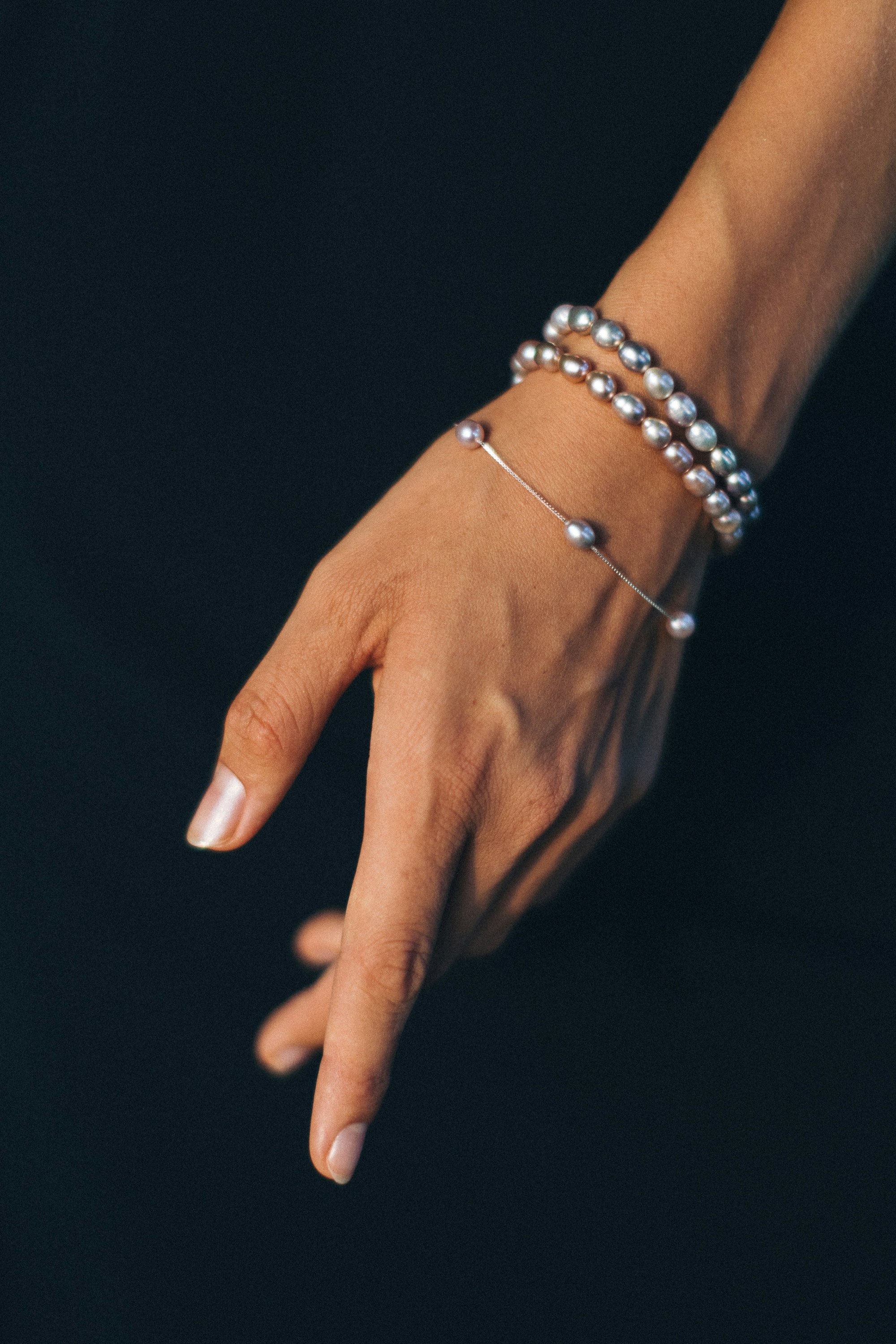
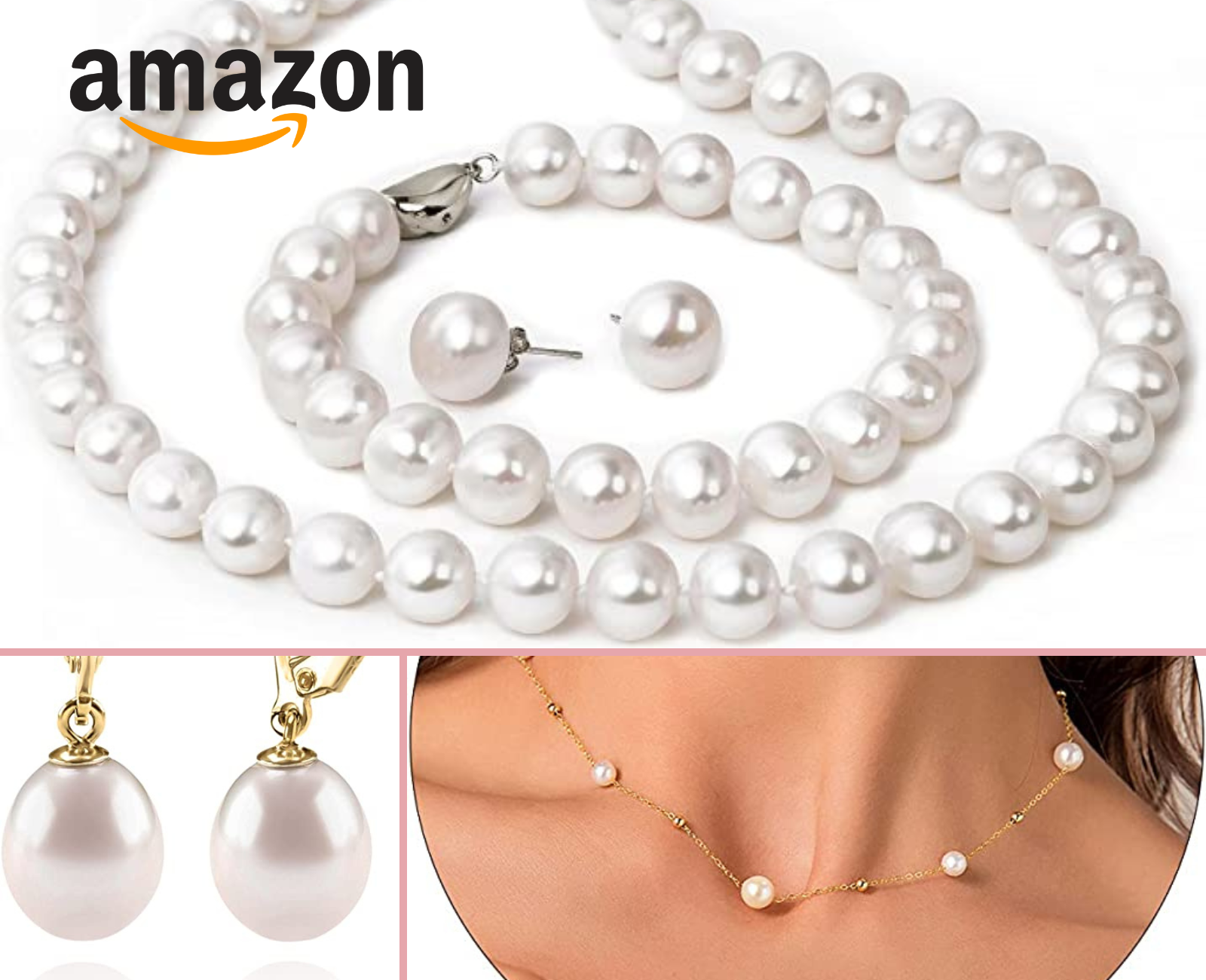
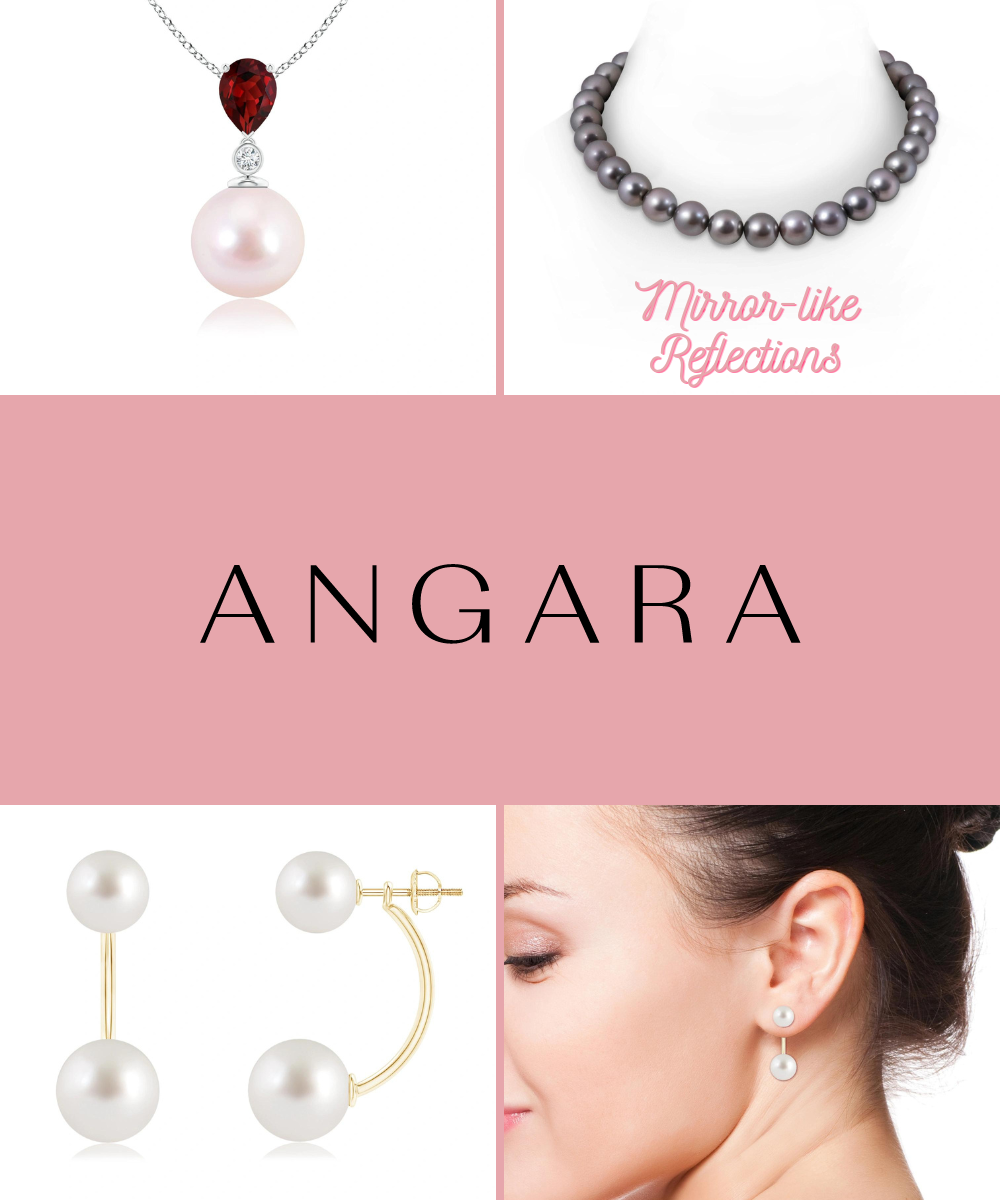
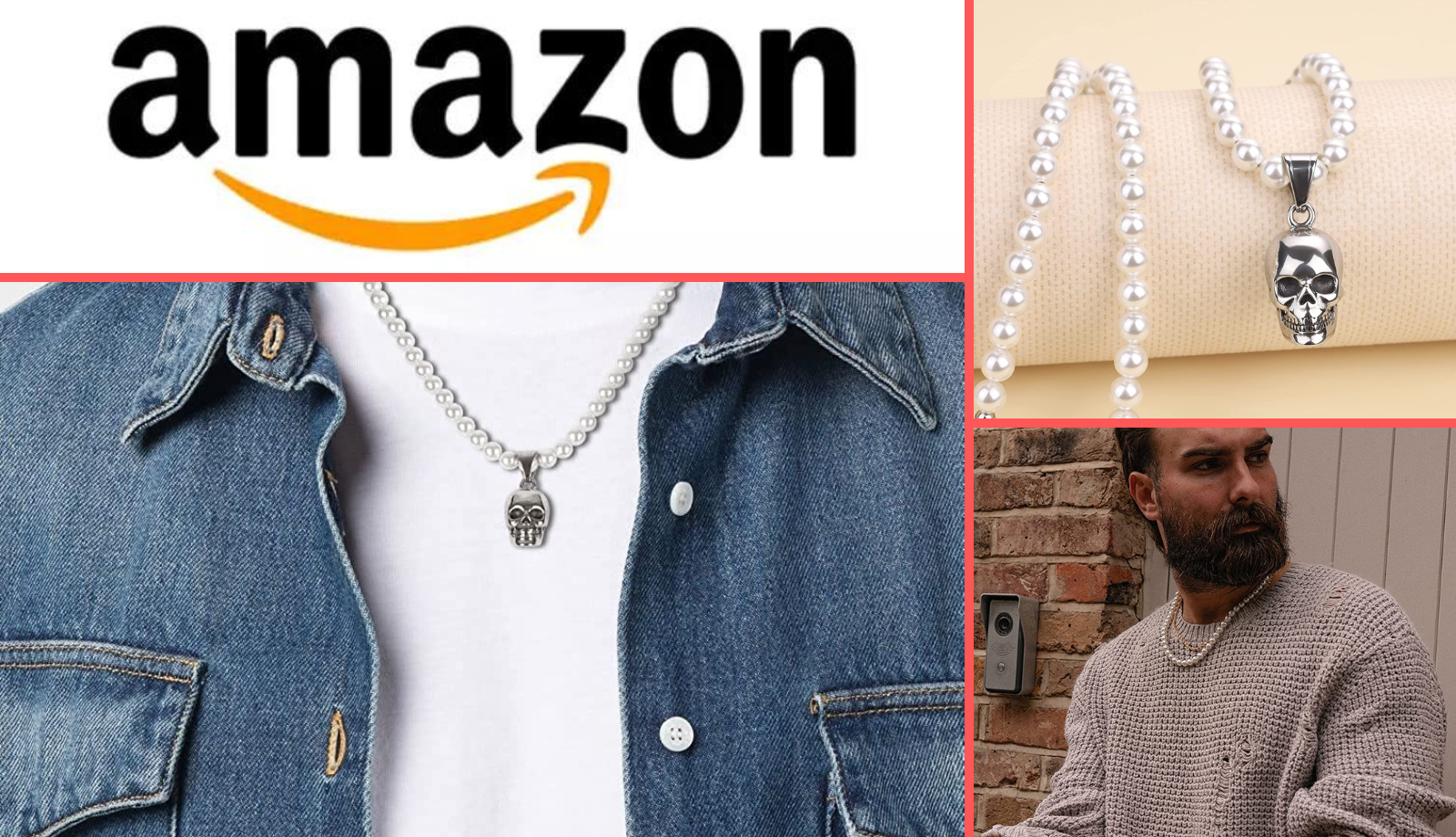



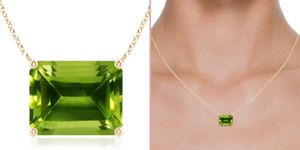
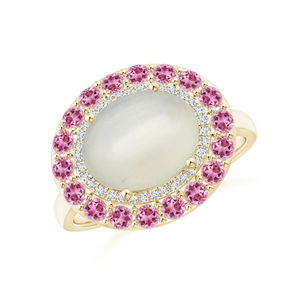





Member discussion